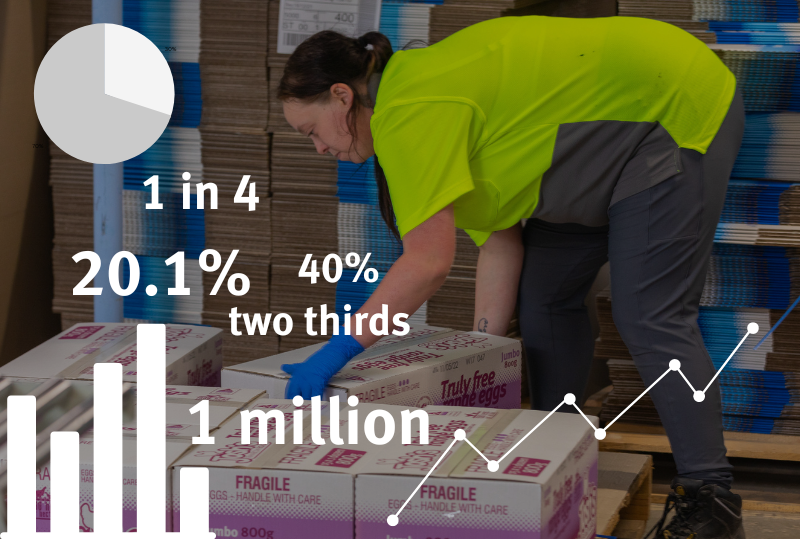Six health statistics you should know
by Mackenzie Bohan

Health statistics in manual handling work
by Mackenzie Bohan

Back pain is the leading cause of serious WorkCover claims for musculoskeletal diseases. It contributes to 6.4% of the 24.2% of all musculoskeletal diseases that lead to claims. It is also one of the most common conditions that our healthcare providers treat onsite.
The latest published national health survey found that mental health is the leading chronic health condition in Australia. Mental health problems can affect absenteeism, productivity, and safety in the workplace. There are various programs and initiatives that companies can employ to support workers, such as Employee Assistance Programs, mental health leave days, and Mental Health First Aid Training. Work Healthy Australia’s healthcare providers are trained in Mental Health First Aid and use it in patient care.
Among this category, traumatic joint/ligament and muscle/tendon injuries were the most common, highlighting the importance of keeping up to date with health and safety training and standards as well as refreshing manual handling training for your workers.
Obesity is one of the leading risk factors for a variety of diseases including but not limited to heart disease, diabetes, and back pain. Obesity can increase workers’ risk of injury and their rehabilitation time.
Body stressing, which includes muscular stress while handling objects, lifting, carrying, or putting down objects was the most common mechanism of injury, accounting for 37% of all serious claims in 2020–21. Serious claims due to the use of non–powered hand tools, appliances and equipment fell 18% between 2000–01 and 2019-20. Despite this fall, they consistently had the highest number of serious claims over the period. The importance of manual handling training and task analysis cannot be underestimated here. Ensuring technique and workstation setups are at ideal ergonomic heights could be examples of ways we may improve the above figures.
According to Safe Work Australia’s Australian Workers’ Compensation Statistics 2020–21 report, labourers accounted for 26% of serious claims in 2020-2021. Labourers also had the highest frequency rate for the injury and musculoskeletal disorders subset of serious claims (20.1 serious claims per million hours worked). This was more than three times the rate for all occupations (5.7).
The way these statistics play out at your workplace will depend on various factors, including but not limited to location, industry field, job roles, health and safety plans, organisational culture, and workforce demographic.
Implementing a comprehensive early intervention injury management program in your workplace will significantly reduce the occurrence of WorkCover claims and LTIs. If you would like further information you can find out more here.
References:
Australian Bureau of Statistics. National Health Survey.
SafeWork Australia. Key Work Health and Safety Statistics.
SafeWork Australia. Statistics on Work-Related Musculoskeletal Disorders.
"*" indicates required fields